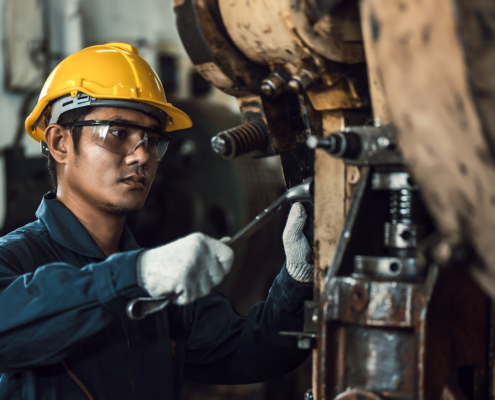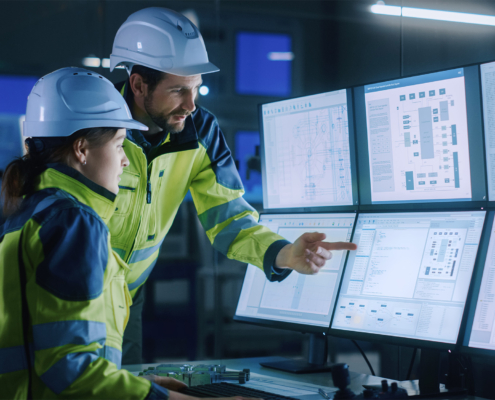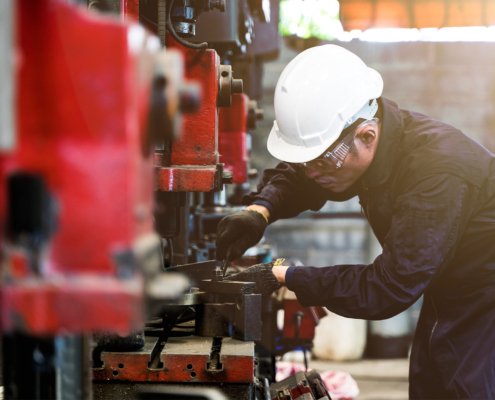 https://www.sbmech.com/wp-content/uploads/2024/09/Group-of-factory-job-workers-using-machine-equipment-in-manufacturing-workshop.jpg
1250
2000
Abstrakt Marketing
/wp-content/uploads/2023/10/cropped-Smith-Boughan_Logo-Formated-Lima-13-1030x269.jpg
Abstrakt Marketing2024-09-24 09:08:182024-11-19 11:07:52Understanding Control in Industrial Maintenance
https://www.sbmech.com/wp-content/uploads/2024/09/Group-of-factory-job-workers-using-machine-equipment-in-manufacturing-workshop.jpg
1250
2000
Abstrakt Marketing
/wp-content/uploads/2023/10/cropped-Smith-Boughan_Logo-Formated-Lima-13-1030x269.jpg
Abstrakt Marketing2024-09-24 09:08:182024-11-19 11:07:52Understanding Control in Industrial MaintenanceMaintaining a building can be quite a complex task, which involves various activities like structural maintenance, electrical maintenance, HVAC maintenance, safety equipment checkups, and many more. Building maintenance management is all about understanding and managing these tasks efficiently. This article is a comprehensive guide, giving you an insightful look into building maintenance management.
What Is Building Maintenance Management?
Structural Maintenance
Structural maintenance encompasses tasks that ensure the integrity and safety of a building’s structure. This includes maintaining foundational elements, walls, floors, and roofs. Issues like a leaky roof or foundation cracks can lead to severe problems if not addressed promptly. Maintenance professionals must regularly assess the building’s structure to identify and rectify any signs of wear and tear, ensuring the building remains safe and functional for its occupants.
Grounds Maintenance
Grounds maintenance involves the care and upkeep of the outdoor areas surrounding a building, including landscaping, parking lots, and pathways. This ensures that the facility’s exterior is welcoming and safe for occupants and visitors alike.
Regular grounds maintenance tasks include mowing lawns, trimming hedges, clearing debris, and repairing walkways. In addition to enhancing curb appeal, well-maintained grounds can prevent accidents and improve the overall safety of outdoor areas.
Electrical Maintenance
Electrical maintenance is crucial for ensuring a building’s electrical systems function safely and efficiently. This includes regular inspections, testing, and repairing electrical components such as wiring, circuit breakers, and lighting systems. Preventive maintenance is essential to avoid electrical fires, equipment damage, and other hazards.
Plumbing Maintenance
Plumbing maintenance involves the repair and upkeep of water supply and waste removal systems within a building. This can range from fixing leaky faucets to addressing more complex issues like clogged drains or water line leaks. Regular maintenance ensures the smooth operation of these essential systems, preventing disruptions and potential water damage.
HVAC Maintenance
Maintenance of heating, ventilation, and air conditioning (HVAC) systems is essential for ensuring indoor air quality and thermal comfort for building occupants. HVAC maintenance includes cleaning ducts, changing filters, and servicing equipment to ensure efficient operation and prevent breakdowns.
Regular HVAC maintenance by skilled technicians extends the equipment’s life and significantly contributes to energy conservation. By maintaining optimal operation, HVAC systems use less energy, which can lead to substantial cost savings for building owners over time.
Safety Equipment Maintenance
Maintaining safety equipment, such as fire extinguishers, smoke detectors, and security systems, is crucial to ensure the well-being of building occupants. Regular inspections and maintenance of these systems help identify and correct any deficiencies, guaranteeing that they function correctly in an emergency.
For facility managers, it’s essential to adhere to scheduled maintenance and rigorous testing of all safety systems within the building. This adherence ensures compliance with safety regulations and significantly enhances the facility’s security and preparedness.
Cosmetic Maintenance
Cosmetic maintenance refers to activities that enhance the appearance of a building, such as painting, cleaning, and repairing minor aesthetic damages. These tasks may seem less critical but play a significant role in maintaining the facility’s positive image and atmosphere.
Regular cosmetic upkeep helps to project a well-maintained and professional image, attracting tenants and visitors. It also contributes to the overall satisfaction and morale of the building’s occupants, making it a pleasant place to work or live.

Why Building Maintenance Management Is Important
Cost Savings
Maintaining a building through regular upkeep and proactive maintenance activities leads to significant cost savings. Preventive maintenance, for instance, helps identify potential issues before they escalate into major repairs, thereby saving on expenses in the long run.
Building owners can avoid the steep costs associated with emergency repairs and equipment replacements by investing in maintenance tasks such as servicing HVAC systems and ensuring electrical and plumbing systems are in good condition. Efficient energy management also results from well-maintained systems, contributing to cost savings.
Improved Facility Lifespan
One of the fundamental benefits of diligent building maintenance management is the extension of the facility’s lifespan. Structures that receive consistent care and maintenance are more likely to withstand the test of time, providing a safe and functional space for more extended periods.
Maintenance activities focused on both the internal and external components, from the structural integrity to the cosmetic appearance, contribute to its overall durability. By proactively addressing wear and tear, facility managers help ensure that the building remains viable and valuable for years.
Increased Safety
Ensuring the safety of building occupants is a priority for facility and maintenance managers alike. Regular maintenance and inspections of safety equipment, structural elements, and significant building systems help mitigate risks and prevent accidents.
Testing fire alarms, inspecting elevators, and maintaining emergency exit signs are vital to creating a secure environment. Additionally, keeping HVAC systems and electrical wiring in top condition reduces the likelihood of hazardous situations.
Maintained Compliance
Adhering to local, state, and federal building codes and regulations is crucial to facility maintenance. Regular inspections and maintenance activities ensure buildings remain compliant, avoiding legal repercussions and fines.
Maintenance management encompasses a broad spectrum, including environmental regulations, accessibility standards, and safety codes. By maintaining up-to-date knowledge and documentation, facility managers can confidently navigate the complex landscape of compliance.
Smith-Boughan Mechanical offers comprehensive building maintenance managementplans that safeguard your investment. Explore our policies today.
Key Components of Building Maintenance Management
Planning and Strategy
Effective building maintenance management begins with strategic planning. This involves assessing the facility’s current state, identifying needs, and setting priorities for maintenance tasks. A clear plan ensures that resources are allocated efficiently and maintenance activities are conducted systematically.
Developing a maintenance plan requires a deep understanding of the building’s systems and their challenges. Facility managers can then create a schedule that balances preventive maintenance with corrective actions, ensuring the facility remains operational and safe.
Regular Inspections
Conducting regular inspections is a critical component of maintenance management. These inspections help identify potential issues before they become significant problems, allowing for timely interventions. Regular checks of the structural integrity, electrical system, plumbing, and HVAC units are essential for maintaining a safe and efficient building.
Inspection schedules should be established based on the building’s specific needs and usage patterns. This ensures that all major systems and components receive the attention they need when they need it.
Preventive Maintenance
Preventive maintenance is a proactive approach to preventing equipment failures and extending the life of building systems. This involves regular servicing, adjustments, and replacements as necessary before problems occur. Preventive maintenance is key to reducing downtime and avoiding costly emergency repairs.
Reactive Maintenance
While preventive maintenance seeks to avoid problems, reactive maintenance addresses issues as they arise. This type of maintenance is essential for dealing with unexpected breakdowns or malfunctions. A responsive maintenance strategy ensures that urgent problems are resolved swiftly, minimizing the impact on the building’s operations.
Efficient reactive maintenance requires a well-trained team of technicians who can quickly diagnose and fix problems. It also depends on having a streamlined process for reporting issues, generating work orders, and deploying maintenance personnel.
Data Management and Technology
Advancements in technology have significantly improved the efficiency and effectiveness of maintenance management. Maintenance management software allows facility managers to track maintenance activities, schedule demos, and maintain granular data on building systems.
Monitoring and Assessing Results
The final key component of building maintenance management is the ongoing monitoring and assessment of results. This involves reviewing the effectiveness of maintenance strategies, analyzing feedback, and making necessary adjustments. Continuous improvement is essential for adapting to evolving needs and ensuring the long-term success of the maintenance program.
Optimize Your Building’s Lifespan With Smith-Boughan Mechanical
The Smith-Boughan team understands the importance of regular building maintenance management. As a leading mechanical service provider, we offer comprehensive maintenance plans that safeguard your investments.
Our team leverages their knowledge and experience to keep your systems in peak operating condition. Contact us today to learn more about our building maintenance management solutions.
Share This Post
More Like This
 https://www.sbmech.com/wp-content/uploads/2024/09/Group-of-factory-job-workers-using-machine-equipment-in-manufacturing-workshop.jpg
1250
2000
Abstrakt Marketing
/wp-content/uploads/2023/10/cropped-Smith-Boughan_Logo-Formated-Lima-13-1030x269.jpg
Abstrakt Marketing2024-09-24 09:08:182024-11-19 11:07:52Understanding Control in Industrial Maintenance
https://www.sbmech.com/wp-content/uploads/2024/09/Group-of-factory-job-workers-using-machine-equipment-in-manufacturing-workshop.jpg
1250
2000
Abstrakt Marketing
/wp-content/uploads/2023/10/cropped-Smith-Boughan_Logo-Formated-Lima-13-1030x269.jpg
Abstrakt Marketing2024-09-24 09:08:182024-11-19 11:07:52Understanding Control in Industrial Maintenance
How to Develop a Quality Control Plan for Industrial Maintenance
Industrial Services (Quality Control), Maintenance
Understanding Industrial Maintenance Compliance Guidelines
Industrial Services (Maintenance), Maintenance
The Role of Technology in Industrial Maintenance Practice Innovations
Industrial Services (Maintenance), Maintenance
Factors to Consider When Choosing an Industrial Maintenance Provider
Industrial Services (Maintenance), Maintenance
Best Practices for Improving Industrial Maintenance
Industrial Services (Maintenance), Maintenance
Exploring the Benefits of Routine Industrial Maintenance
Building Services (Maintenance Agreements), Maintenance
Your Guide to Industrial Maintenance
Building Services (Maintenance Agreements), Maintenance
The Importance of a Commercial HVAC Maintenance Agreement
MaintenanceAbout Us
Smith-Boughan Mechanical has been servicing the Lima, Ohio, region with industry-leading mechanical design, fabrication, construction, and maintenance services since 1927.



